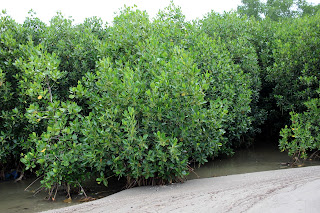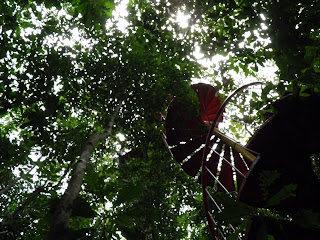One of the most visited sites for coastal forest conservation in Cagayan de Oro is the mangrove tree planting and rehabilitation area in Punta, Bonbon. With coordination from CLENRO, different government, non- government organizations, civic groups as well as members of the uniformed service government personnel such as those of the AFP and PNP have been going to the site to give their fair share of effort in planting the shore with mangrove trees.
The activity was halted during the COVID pandemic since
people were limited of their movement or restricted to do activities that
necessitated their gathering. Now, that the spread of the pandemic has slowed
down and the number of infected people brought to a significant minimum, it
will be expected that mangrove planting on the shore will soon resume.
Mangrove trees and other salt water tolerant plants are important
for the protection of land especially those located near the shore because they
keep the soil and sand from being washed away to the sea by the winds and waves
that over time make the sea inch closer inland. During natural calamities such
as tsunami and typhoons, mangrove forest serves as wind and wave brake that lessen
the impact of the destructive force of said phenomena before they can reach and
wreak havoc on human settlement area near the shore.
A mangrove forest is a breeding ground and sanctuary for
different aquatic marine animals such as fishes, crabs, shells, and even insects. It
can also attract birds that hunt for foods therein. In this forest is an
ecosystem where plant and animal species are dependent to each other for their continuing
existence.
It is now evident that the effort of the people has now
borne fruit. Cluster of trees planted long ago has evolved into a small forest.
Other trees are now tall and young ones show sign of surviving into maturity. Patches
of area on the dark shore are gradually turning green and probably in the future
said places will also turn into a mangrove forest.
Mangrove tree planting on the shore of Punta, Bonbon is only
one of the activities conducted for the preservation of the environment. Other
activities done by cause oriented people in the city include tree planting in such vulnerable
areas as river sides, hills and mountains and cleaning of waterways such as
creeks and rivers to rid them of obnoxious garbage like plastic bags and other
plastic products.
It goes without saying that the development to the greening
project is symbolic to the people’s desire and determination to work together to attain an eco-friendly
environment which is livable and safe to the community.
See related post by clicking on the link below:





















